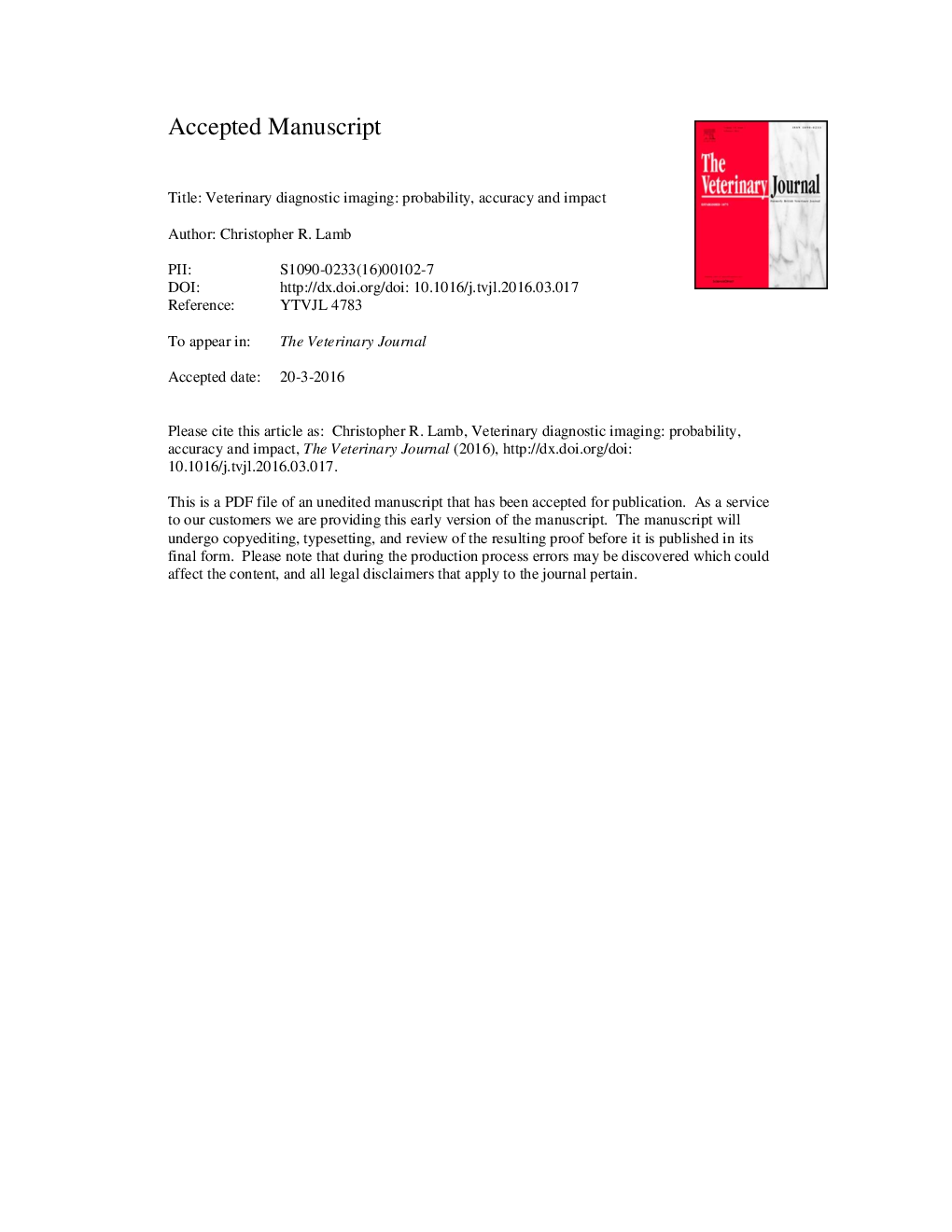| Article ID | Journal | Published Year | Pages | File Type |
|---|---|---|---|---|
| 5545042 | The Veterinary Journal | 2016 | 30 Pages |
Abstract
Diagnostic imaging is essential for diagnosis and management of many common problems in veterinary medicine, but imaging is not 100% accurate and does not always benefit the animal in the way intended. When assessing the need for imaging, the probability that the animal has a morphological lesion, the accuracy of the imaging and the likelihood of a beneficial impact on the animal must all be considered. Few imaging tests are sufficiently accurate that they enable a diagnosis to be ruled in or out; instead, the results of imaging only modify the probability of a diagnosis. Potential problems with excessive use of imaging include false positive diagnoses, detection of incidental findings and over-diagnosis, all of which may contribute to a negative benefit to the animal. Veterinary clinicians must be selective in their use of imaging, use existing clinical information when interpreting images and sensibly apply the results of imaging in the context of the needs of individual animals. There is a need for more clinical research to assess the impact of diagnostic imaging for animals with common conditions to help clinicians make decisions conducive to optimal patient care.
Related Topics
Life Sciences
Agricultural and Biological Sciences
Animal Science and Zoology
Authors
Christopher R. Lamb,
